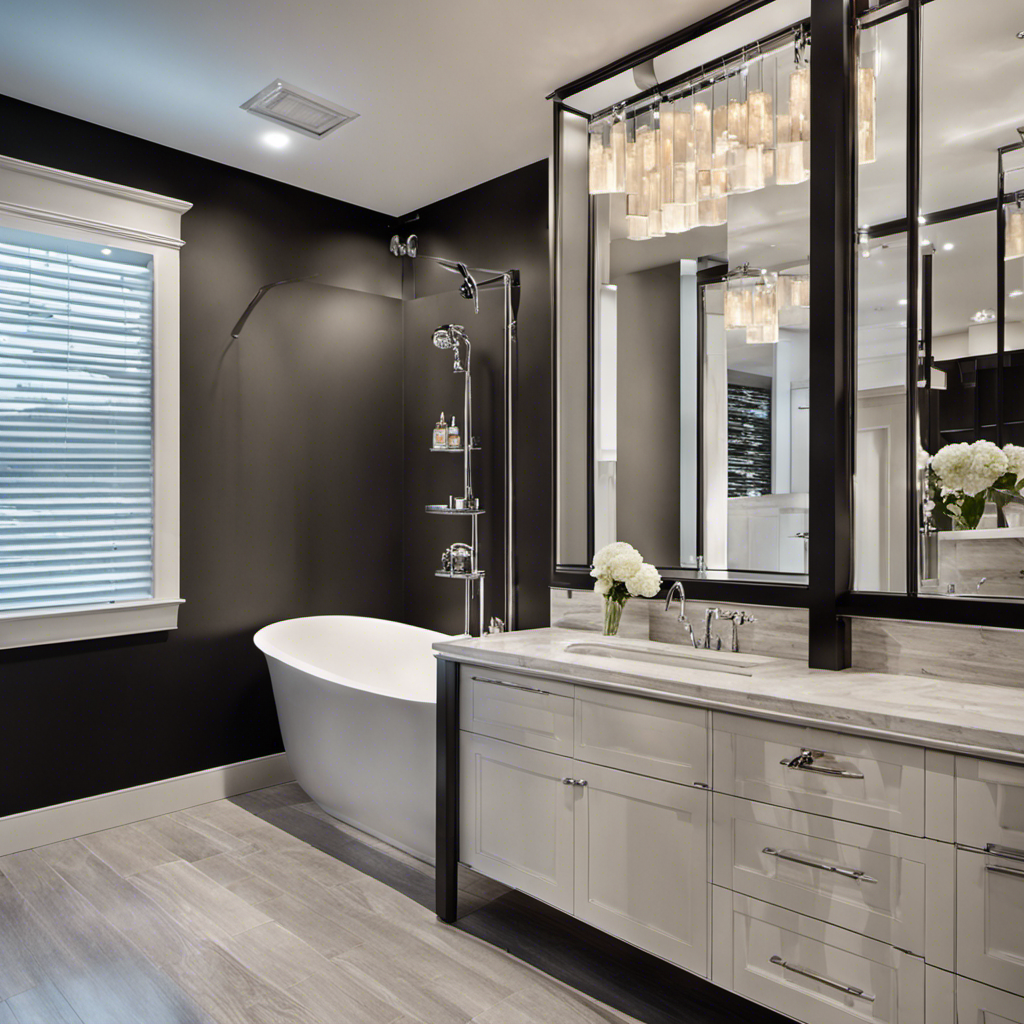When it comes to toilet flanges, the proper height is crucial to avoid leaks and movement. Plumbers have differing opinions on the ideal height, but it’s generally recommended to have the flange between the floor level and ¼ inch above.
However, if the bathroom floor has a slope, it’s advisable to have a slight height above the floor. Incorrect flange height can lead to water leakage and instability.
In this article, we will explore the importance of proper flange height and discuss effective solutions for adjusting it.
Key Takeaways
- Plumbers install toilet flanges anywhere from the floor level to ¼ inches above the floor
- A little height above the floor level is advisable if the bathroom floor has a slope
- Incorrect flange height can lead to water leakage and toilet movement
- Possible solutions for adjusting flange height include using a toilet flange extender or cutting the drain pipe
Importance of Proper Flange Height
Incorrect flange height can lead to water leakage and toilet movement, highlighting the importance of maintaining the proper height for toilet flanges. Flange stability is crucial for the overall functioning of the toilet.
If the flange is too low, it can result in water leakage between the toilet and the floor, causing damage to the floor and potentially leading to wood rotting. On the other hand, if the flange is too high, it can cause the toilet to wobble or even detach from the floor, creating an unstable and unsafe environment.
Additionally, incorrect flange height can affect the proper sealing of the wax ring, further increasing the risk of water leakage. Therefore, it is essential to ensure that the flange height is within the recommended range to avoid these potential issues.
Factors to Consider When Adjusting Flange Height
When adjusting the height of the flange, it is important to consider factors such as the slope of the bathroom floor and the need for stability.
Sloped bathroom floors have several advantages, including better drainage and reduced water pooling. However, they can pose potential issues when it comes to the height of the toilet flange. An uneven flange height can lead to water leakage and toilet movement, compromising the integrity of the plumbing system.
To avoid these problems, it is crucial to ensure that the flange is adjusted properly. This may involve using a toilet flange extender or cutting the drain pipe to achieve the desired height.
Using Toilet Flange Extender for Height Adjustment
A toilet flange extender can be easily installed on top of the flange using a wax ring to raise the height as needed. This solution is particularly useful when adding new flooring to the bathroom and the flange becomes too low. Toilet flange extenders are available in ¼ and ½ inch thickness options. To choose the right one, consider the height difference required and the type of flooring being installed.
Here is a table summarizing the pros and cons of toilet flange extenders:
| Pros | Cons |
|---|---|
| Easy to install | May require additional wax rings for proper sealing |
| Adjustable height options | May not be suitable for all flange sizes |
| Cost-effective solution | May not provide a permanent fix |
| Can prevent water leakage | May require professional installation in some cases |
When selecting a toilet flange extender, it is important to ensure that it is compatible with the existing flange and meets the desired height requirements. Consider consulting a professional plumber for guidance if needed.
Cutting the Pipe: An Alternative Solution
Cutting the drain pipe is a feasible alternative for adjusting the height of the flange if it is too high above the floor. This method offers both advantages and disadvantages.
One advantage is that it allows for precise adjustment of the flange height to ensure a proper fit with the toilet. Cutting the pipe can also be a cost-effective solution compared to adding new flooring, which can be impractical and costly.
However, there are also some disadvantages to consider. Cutting the pipe requires the removal of the old flange, which can be time-consuming and may require additional tools. Additionally, if not done properly, cutting the pipe can lead to damage or leaks in the plumbing system.
It is important to carefully consider the pros and cons before choosing this method of adjusting the flange height.
Common Questions About Flange Height and Installation
One common question about flange installation is whether the flange should be level with the bathroom floor. The answer is that plumbers install toilet flanges anywhere from the floor level to ¼ inches above the floor. While there is no universally advised toilet flange height, there are pros and cons to different heights.
Pros of having the flange level with the floor:
- Provides a seamless and aesthetic appearance.
- Makes it easier to install the toilet.
- Allows for proper sealing with the wax ring.
Cons of having the flange level with the floor:
- May lead to water leakage if the bathroom floor has a slope.
- Can cause the toilet to wobble or move.
Benefits of hiring a professional plumber for flange installation:
- Ensures proper height and alignment for optimal functionality.
- Reduces the risk of water leakage and toilet movement.
- Provides expertise in troubleshooting and problem-solving.
Overall, the proper toilet flange height should balance aesthetics, functionality, and the specific conditions of the bathroom floor. Hiring a professional plumber for flange installation can help ensure the best outcome and avoid potential issues.
Conclusion
In a surprising twist of fate, it turns out that the height of toilet flanges is actually a crucial factor in preventing water leakage and toilet movement.
Who would have thought that such a seemingly insignificant detail could cause such havoc in our bathrooms?
Luckily, there are solutions available for those who find themselves facing a flange that is either too low or too high. Whether it’s using a toilet flange extender or cutting the pipe, there are options to ensure that our toilets are securely in place and our floors remain dry.
So, next time you’re faced with a flange dilemma, remember the importance of proper height and avoid the dreaded leaks and movement.










